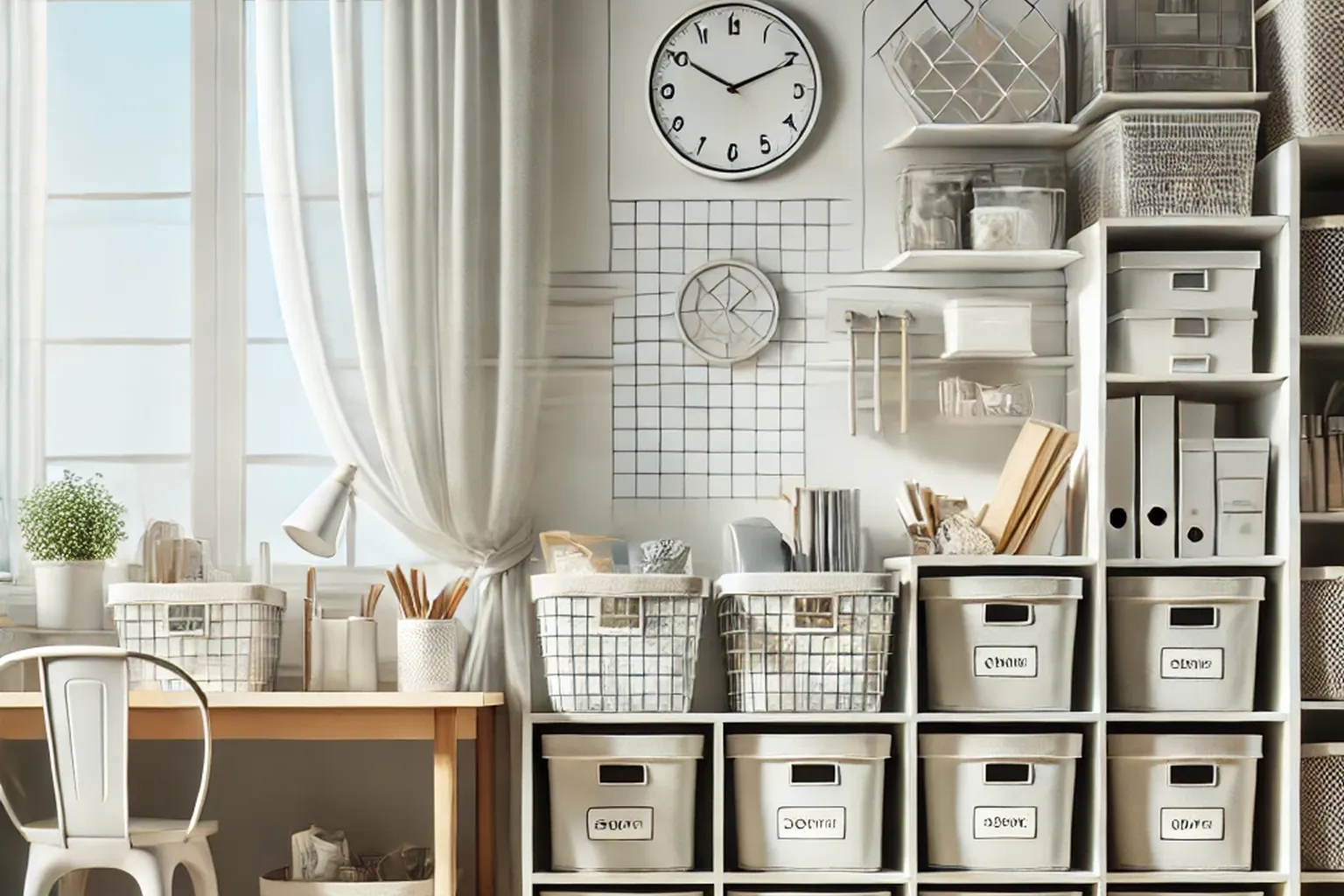home cleaning
Lesson 2: Decluttering
Decluttering is the foundation of an effective cleaning routine. Removing unnecessary items not only makes cleaning easier but also creates a more organized and peaceful living space. This lesson will guide you through the process step-by-step.
HC
HowClean
free Course
3271
Likes
3276
Recommends
3279
Helpfuls

Step 1: Sort and Organize
Start Small:
- Begin with one area or room to avoid feeling overwhelmed. Focus on a specific spot like a countertop, drawer, or corner.
- Progress methodically—finish one area before moving to the next.
Use the Three-Bin System: Create three clearly labeled bins or boxes for sorting items:
- Keep: Items you use regularly or hold sentimental value. These will be organized and returned to their designated places.
- Donate: Items in good condition that you no longer need or use. These can be donated to charity or passed on to someone else.
- Discard: Items that are broken, expired, or unusable. These will be thrown away or recycled.
Decluttering Process:
- Surfaces: Remove everything from countertops, tables, and shelves.
- Sort each item into one of the three bins.
- Return only essential or decorative items to the cleaned surface.
- Floors: Pick up shoes, clothes, or clutter from the floor.
- Store shoes in a designated rack or closet.
- Laundry goes into a hamper; misplaced items are sorted into bins.
- Drawers and Cabinets: Open one drawer or cabinet at a time.
- Take everything out, sort, and organize.
- Use organizers or dividers to maintain neatness.
- Surfaces: Remove everything from countertops, tables, and shelves.
Evaluate Each Item:
- Ask yourself:
- Do I use this regularly?
- Does it bring me joy or serve a purpose?
- Is it worth the space it occupies?
- Ask yourself:
Return Items to Their Places:
- Designate specific spots for every item you keep. This ensures things are easy to find and maintain.
Step 2: Prepare Trash Bags
Set Up Trash Bags:
- Keep a large trash bag handy in every room as you declutter.
- Use separate bags for recyclables and non-recyclables to make disposal easier.
Dispose of Trash As You Go:
- Empty bins and discard items from the "Discard" category immediately.
- Check for expired food, old toiletries, or unnecessary paperwork that can be thrown out.
Handle Donated Items:
- Once you’ve filled the "Donate" bin, pack the items into a bag or box.
- Arrange to drop them off at a local charity, thrift store, or donation center soon to prevent them from piling up again.
Recycling:
- Sort recyclable materials (plastic, paper, glass) into their respective bins.
- Follow local recycling guidelines for proper disposal.
Additional Tips for Successful Decluttering
Set a Timer:
- Allocate 20-30 minutes per session to stay focused and avoid burnout.
- Take breaks between rooms or areas.
Enlist Help:
- Get family members involved in sorting their belongings.
- Turn it into a collaborative project to speed up the process.
Use Organizers:
- Purchase storage bins, baskets, or shelves to keep your "Keep" items tidy.
- Use labels to make organizing and finding items easier.
Create Rules to Maintain Decluttered Spaces:
- Adopt a "one-in, one-out" policy: For every new item you bring into your home, let go of an old one.
- Regularly reassess and declutter areas to prevent buildup.
By the end of this lesson, your space should be free of unnecessary clutter, with items sorted into clear categories and trash disposed of properly. Decluttering not only makes cleaning easier but also provides a sense of accomplishment and order in your home.
